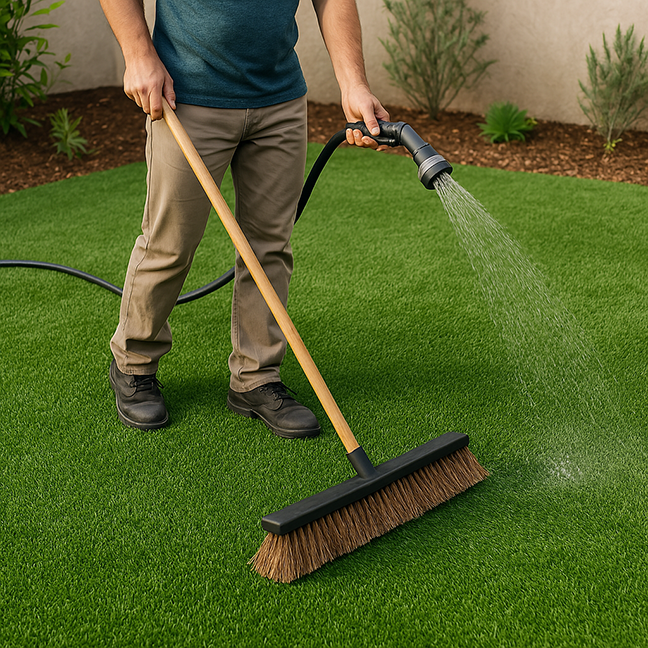In this blog post we discuss how to clean artificial grass. Switching from natural grass to artificial turf is a smart choice—especially in regions affected by drought or water restrictions. But beyond water conservation, synthetic lawns offer another huge benefit: low maintenance. That said, a little care goes a long way in keeping your artificial grass looking fresh and functioning as it should.
So, what’s the best way to clean artificial grass, and what tools make the job easier? Here’s a breakdown.
Clear Large Debris Regularly
No matter the season, your lawn will collect debris from nearby trees and shrubs. Whether it’s twigs, leaves, or flower petals, it’s important to remove larger debris before it settles into the turf. Doing so helps protect the mesh fabric and maintain a clean look. After a windy day or storm, give your lawn a quick scan.
This simple task can even be a great way for kids to pitch in at home, but some situations call for a bit more than just a once-over with a trash bag.
Use Lawn Blowers or Shop Vacs with Care
For smaller yards, a handheld leaf blower or shop vacuum can help clear away leaves and debris. Just be mindful of the infill—the material that keeps your turf blades upright. Using too much force, especially with lighter infills like sand, can cause displacement or even suction up the infill.
It’s best to test a small area first to make sure the pressure won’t disturb the turf structure.
Try a Lawn Rake
Lawn rakes, especially those with baggers attached to riding mowers, work well for larger areas. The soft bristles lift debris and fluff up turf blades without disrupting the infill. Manual rakes are also effective but may need more frequent emptying.
Additionally, raking helps aerate the infill, reducing the risk of compaction and minimizing odors. It also refreshes the appearance of the grass, especially in areas with heavy foot traffic.
Brush It Out
For smaller lawns, a stiff push broom or turf brush works wonders. These tools help dislodge smaller debris, fluff the turf blades, and maintain the lawn’s overall appearance. Power brooms are a great option for larger properties, providing a more efficient and thorough clean.

Rinse Monthly (or As Needed)
Once a month, give your artificial lawn a good rinse with the hose. This helps remove dust and dilute any organic residue. If you have pets, it’s a good idea to rinse the areas they use more frequently—once a week is a solid rule of thumb, or even right after use if possible. This simple step helps prevent odors and keeps your turf hygienic.
Cleaning artificial grass doesn’t take much time or effort, especially when compared to the ongoing upkeep of a natural lawn. With just a bit of regular care, your synthetic grass will stay beautiful, odor-free, and ready to enjoy all year round.

